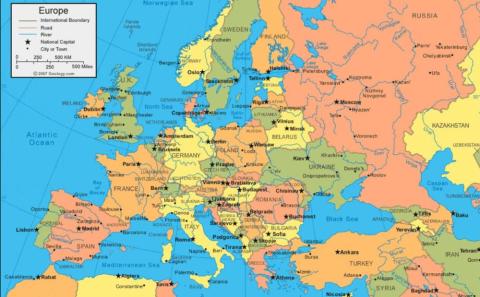Friends, I am often asked “What will the peace be like?” And this is significant progress compared to the question “When will the war end?”)
From the point of view of the development of events, the key principles of a peaceful settlement have probably already been formed. And the situation around Ukraine may be following the “Baltic scenario” - concluding an agreement on the cessation of hostilities (formal or informal, direct or with the participation of intermediaries) and transferring the resolution of issues of ownership of territories from the military to the political and diplomatic sphere, starting in 2025.
Although for Ukraine this scenario will be somewhat “Georgian”.
In this case, mediators (USA, China, France, Germany, etc. or the UN Security Council) and the Russian Federation can provide Ukraine with security guarantees of a neutral country. Formally, this may be a decision of the UN Security Council for Ukraine as a state, but not for an internationally recognized territory.
Let me remind you that, according to a similar algorithm, the United States never recognized the annexation of the Baltic countries by the USSR in 1939-1940, which, after the collapse of the USSR and the restoration of their independence, made it possible to admit these countries to NATO and the EU. At the same time, thousands of international agreements and agreements were concluded between the USA and the USSR, and the countries were even allies in the Second World War.
The main advantage of this model is that it allows all sides to declare victory (or defeat of their opponent).
For the USA, this makes it possible to:
- avoid the impact of a likely Russian attack on Ukrainian territory in 2024 on the American elections (November 2024) or further political processes, and protect its allies in Europe;
- significantly reduce the financial burden of supporting Ukraine;
- declare the defeat of the Russian Federation - that the aggressor - the Russian Federation has not achieved its geopolitical goals (letters from the Russian Federation to the USA and NATO demanding the actual distribution of spheres of influence in Eastern Europe and the post-Soviet space) and its attempt to challenge the American-polar world has failed;
- Continue the track to strengthen the security, political and economic dependence of the Western World on the United States and increase spending in this area on the part of the allies;
For the Russian Federation:
- declare victory over the West;
- stabilize the situation on the eve of the presidential elections in the Russian Federation (March 2024) and go to them with Victory;
- achieve the main information goal - non-location of Western military bases on the territory of Ukraine (neutral status);
- hold the occupied territories and the “land bridge to Crimea”;
- Start negotiations on a gradual reduction in sanctions pressure and unfreezing of assets.
For Ukraine:
- record the fact of maintaining statehood, ending the exhausting war;
- conclude real security guarantees, including in the form of collective defense, instead of the current “nothing” or “promises to help”;
- increase the geopolitical status of the country from the current “non-aligned” to the internationally recognized “neutral”;
- receive funds for economic and social restoration from the countries participating in the Agreement (including “compensation/assistance” from the Russian Federation);
- Confirm the absence of a formal refusal to return the occupied territories (legal preservation of the principle of territorial integrity), and continue to fight for them diplomatically in anticipation of a new period of political instability in the Russian Federation;
- will provide the time necessary to restore and enhance security. We will again (as from 2014 to 2022) have time to strengthen our state and army, to mourn all our dead... How much peacetime there will be will again depend on politicians.
For EU:
- restoration of military security and reduction of financial burden;
- stabilization of the internal political situation (to avoid the “right wave”);
– return to the track of economic development (access to cheap Russian resources);
- reduction of US influence.
For China:
- reducing sanctions and other risks of international trade;
- reduction of US influence in Europe;
- the possibility of participating in the restoration of Ukraine and using it as a Chinese trade hub in the region.
The world will be balanced and compromise, taking into account the interests of all parties. Although the equilibrium point in this balance depends today on the final situation at the front and the art of politicians.
Ruslan Bortnik,
Director of the Ukrainian Institute of Politics
